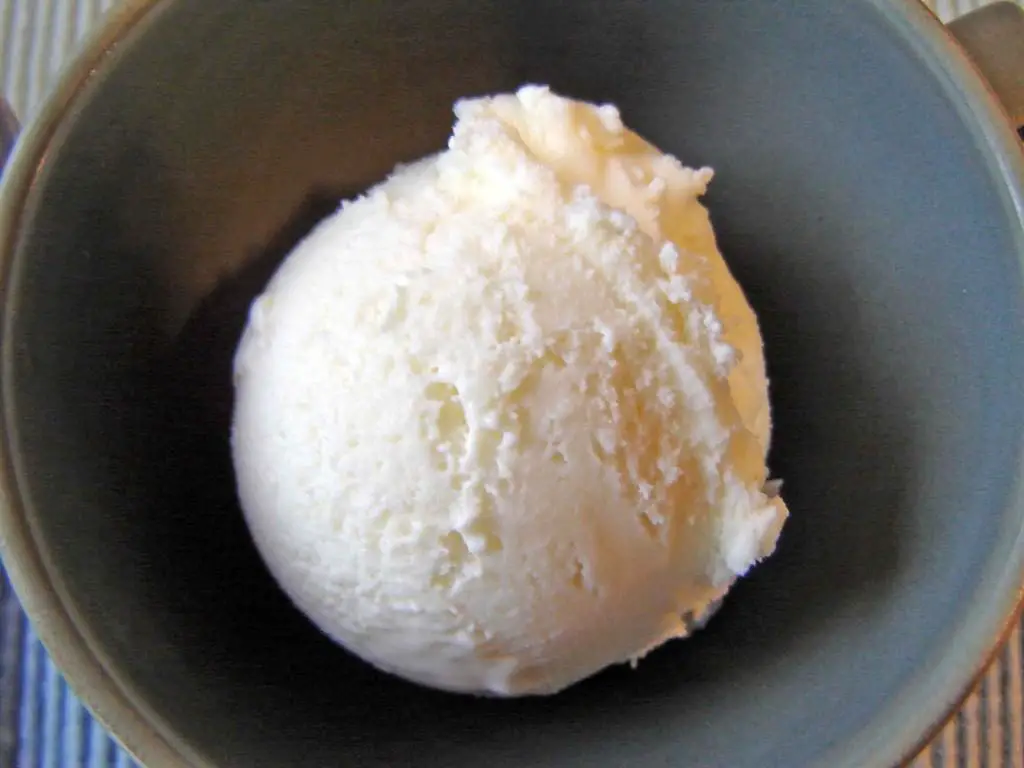You may have wondered the difference between sour cream vs butter when it comes to topping something like a baked potato. Both are dairy products but they are different in their ingredients, nutrition, and how they are made. Let’s dig into the differences between sour cream vs butter.
Ingredients
Sour Cream: Sour cream can simply be made with cultured cream. There really is no need for other ingredients. However, several brands of sour cream contain additives. preservatives, and/or thickeners. Other ingredients you might find in sour cream are enzymes, whey, carrageenan, food starch, potassium sorbate, sodium phosphate, calcium sulfate, locust bean gum, and guar gum.
Butter: Real butter is made from churned milk or cream. Salt is often added to created salted butter. The spreadable butter products contain oil like canola or olive create a softer, spreadable butter. Some other ingredients you might find in butter are vitamin A palmitate, beta carotene, citric acid, potassium sorbate, coloring, and monoglycerides.
How They Are Made
Sour cream is made by adding a harmless lactic acid producing bacteria to cream. The bacteria thickens the cream and creates that classic sour cream taste. You can make sour cream at home by adding real buttermilk (must be cultured) or lemon juice to cream. These will cause the cream to thicken to the texture of sour cream if allowed to sit about 24 hours at room temperature. Check out a video recipe here for a tasty homemade sour cream.
Butter is made by churning cream to remove air and the liquid known as buttermilk. What remains is the butterfat, which clumps together during the churning process. Salt is then added, if the dairy is making salted butter, and then the butterfat is churned again to mix in the salt. It is then officially butter and ready for packaging.
Nutrition
Sour cream is by far the better nutritional choice between the two products. You can see below that sour cream has a lot less fat and calories than butter of a similar serving size. As previously indicated, butter is essentially made from the fatty portion of cream while sour cream is made from cream. The butter (butterfat) obviously holds more calories and fat than the cream used to make sour cream.
Sour Cream
| Product | Serving Size | Calories | Total Fat (g) | Saturated Fat (g) | Cholesterol (mg) | Sodium (mg) | Carbohydrates (g) | Dietary Fiber (g) | Sugars (g) | Protein (g) |
|---|---|---|---|---|---|---|---|---|---|---|
| Regular Cultured Sour Cream | 2 Tablespoons | 48 | 4.6 g | 2.4 g | 14 mg | 7 mg | 1.1 g | 0 g | .82 g | .59 g |
| Sour Cream Light | 2 Tablespoons | 33 | 2.5 g | 1.6 g | 8 mg | 20 mg | 1.7 g | 0 g | 0.05 g | .84 g |
| Sour Cream Fat-Free | 2 Tablespoons | 18 | 0 g | 0 g | 2 mg | 34 g | 3.7 g | 0 g | 0.09 g | .74 g |
Butter
| Butter (Type) | Serving Size | Calories | Total Fat | Saturated Fat | Cholesterol | Sodium | Carbohydrates | Dietary Fiber | Sugars | Protein |
|---|---|---|---|---|---|---|---|---|---|---|
| Butter, Salted | 2 Tbsp (28.4 g) | 204 | 23.04g | 14.59g | 61mg | 183mg | 0.02g | 0 | 0.02g | .24g |
| Butter, Light, Salted | 2 Tbsp (28g) | 140 | 15.43g | 9.61g | 30mg | 126mg | 0 | 0 | 0 | .92g |

